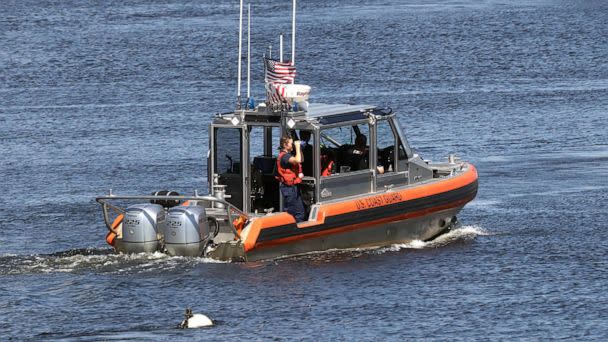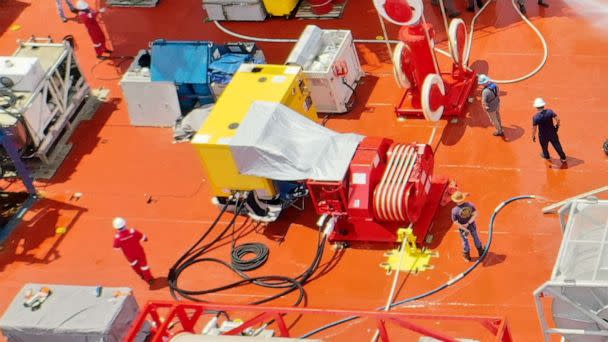Missing Titanic tour sub: Former Navy sub captain on rescue options
Rescuers racing against the clock to save the five people trapped in a tourist submersible nearly two miles deep in the Atlantic Ocean are facing major obstacles that could make saving the people onboard extremely difficult, according to a former Navy submarine commander.
Retired Capt. David Marquet told ABC News on Monday that this type of rescue operation is complicated because there aren't nearby U.S. or Canadian underwater vessels that can go as deep as the Titanic wreckage, which sits 13,400 feet below the ocean's surface. Also, the ocean is pitch black at that depth.
"The odds are against them," Marquet said. "There's a ship in Boston that has this ability to either lower cable and connect to it or have a claw. It's still a thousand miles away."
MORE: Submersible on Titanic tour reported missing off Newfoundland with 5 people aboard
Even if a vessel was able to locate the submersible and lower a cable, it's extremely difficult to safely navigate the waters and attach it, Marquet said.

"You've got to get it exactly right. It's sort of like ... getting one of those toys out of those arcade machines. In general, you miss," he said.
Rescuers do have one advantage, Marquet said, as weather conditions off the coast of Newfoundland are not rough and will not disturb any boat or vessel there.
The 21-foot submersible lost communication with the mainland 1 hour and 45 minutes after it embarked on its tour of the Titanic wreckage. Marquet said if the boat made it to the surface, the submersible crew would be able to open the hatch to allow for more oxygen while it was adrift.
MORE: Video US Coast Guard briefs on missing submersible with five believed to be aboard
The vessel is designed to hold 96 hours of oxygen, Rear Adm. John Mauger, commander of the U.S. Coast Guard First District, told reporters Monday.

Some U.S. military groups are sending advanced equipment and technology to help with the efforts.
Three U.S. Air Force C-17 cargo aircraft will be transporting commercial equipment from Buffalo, New York to St. John’s, Newfoundland, to help out with salvage efforts, the Pentagon said Tuesday.
MORE: Missing Titanic tourist submersible live updates
The Navy announced Tuesday it is sending "subject matter experts and a Flyaway Deep Ocean Salvage System (FADOSS), motion compensated lift system designed to provide reliable deep ocean lifting capacity for the recovery of large, bulky, and heavy undersea objects such as aircraft or small vessels, from Navy Supervisor of Salvage."
"Expertise and equipment will support USCG and the unified command. Personnel and equipment are scheduled to arrive at St. John’s tonight," the Navy said in a statement Tuesday.

Additionally, the New York Air National Guard’s 106 Rescue Wing out of Westhampton, which flies out a version of a C130 that specializes in search and rescue, was deployed to help with the search, New York Gov. Kathy Hochul announced Tuesday.
The 106th flies fixed-wing search and rescue aircraft and rescue helicopters and has a unit of pararescue jumpers who are trained to rescue people on sea and land, according to the governor's office.
On Monday, Marquet told ABC that if the five people are still alive, their best course of action would be to sleep to conserve their oxygen.
"We would put the vast majority of the crew to sleep because that's when you're using the least amount of oxygen and you're expelling the least amount of carbon dioxide," he said.
ABC News' Luis Martinez and Aaron Katersky contributed to this report.
Missing Titanic tour sub: Former Navy sub captain on rescue options originally appeared on abcnews.go.com
